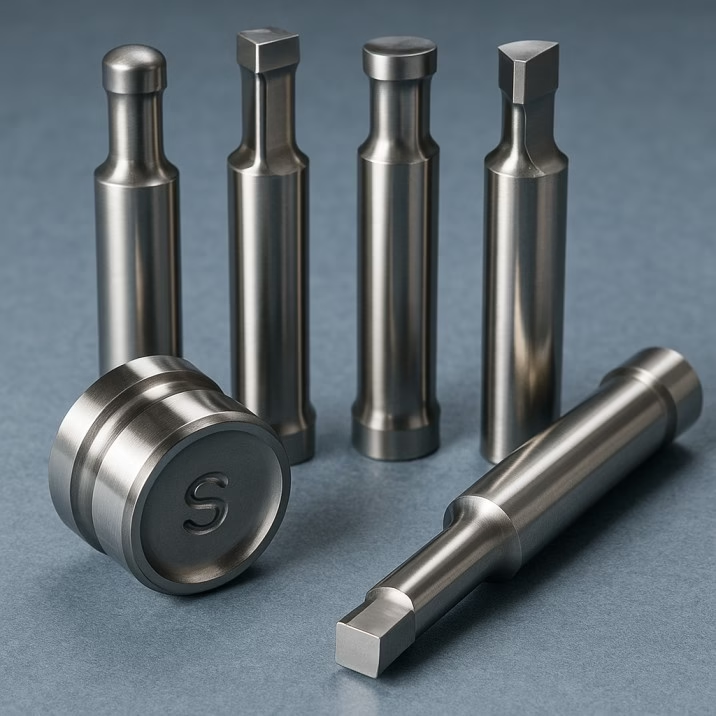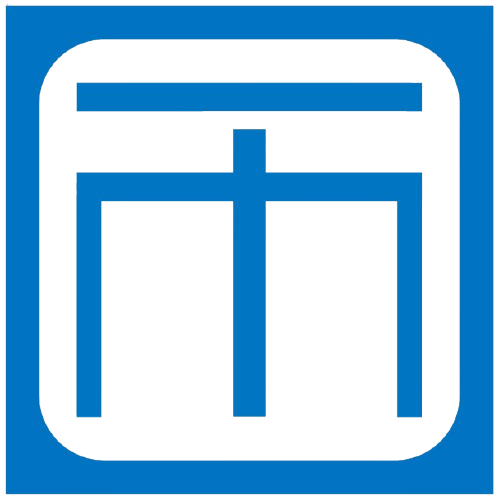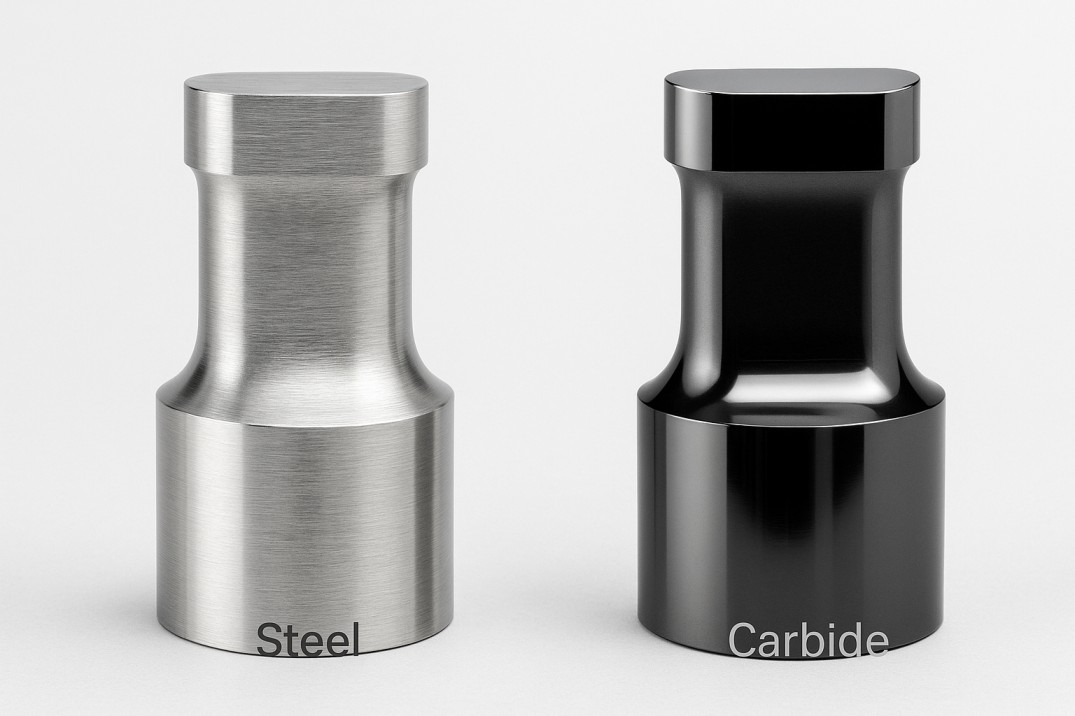Carbide vs steel tablet punches – this critical comparison affects every pharmaceutical manufacturer’s bottom line. While steel punches have dominated tablet production for decades, carbide alternatives are revolutionizing the industry with superior wear resistance and extended service life that can deliver 10-50x longer tooling life.
This comprehensive analysis examines real-world performance data, cost implications, and ROI calculations to help you make informed tooling decisions that maximize profitability and operational efficiency.

Material Properties: Carbide vs Steel Tablet Punches Performance Breakdown
Steel Tablet Punches Characteristics
Traditional steel punches manufactured from high-quality tool steels (D2, A2, or proprietary pharmaceutical alloys) offer proven reliability:
Hardness Range: 58-62 HRC after heat treatment
- Excellent deformation resistance under compression forces
- Sufficient toughness to resist impact damage during high-speed operations
Superior Machinability
- Complex geometries and intricate embossing patterns achievable
- Tight dimensional tolerances for custom tablet designs
- Cost-effective modifications for prototype development
Enhanced Toughness Properties
- Resistance to chipping and cracking under extreme forces
- Optimal for formulations containing hard, abrasive particles
- Proven durability in high-compression applications
Advanced Surface Treatments Available
- Chrome plating for enhanced wear resistance
- Titanium nitride (TiN) coatings for reduced friction
- Diamond-like carbon (DLC) for premium applications
Carbide Tablet Punches: Superior Performance Data
Tungsten carbide punches with cobalt binders deliver dramatically different performance metrics:
Exceptional Hardness: 85-92 HRA (68-76 HRC equivalent)
- 10-15 points harder than steel alternatives
- Exceptional resistance to abrasive wear patterns
Revolutionary Wear Resistance
- 10-50x lower wear rates vs steel in abrasive formulations
- Documented cases: 10+ million tablets vs 500K-1M for steel
- Consistent dimensional accuracy throughout extended campaigns
Superior Compressive Strength
- Maintains stability under extreme compression forces
- Prevents deformation that commonly affects steel tooling
- Critical for large tablet production requiring high forces
Chemical Inertness Benefits
- Reduced corrosion risk with aggressive formulations
- Compatibility with organic acids and moisture-sensitive compounds
- Extended service life in challenging chemical environments
Carbide vs Steel Tablet Punches: Performance Comparison Analysis
Wear Characteristics by Formulation Type
Abrasive Formulations (Microcrystalline Cellulose, Dicalcium Phosphate)
- Steel Performance: 500,000-1,000,000 tablets before replacement
- Carbide Performance: 10,000,000+ tablets before significant wear
- ROI Impact: 10-20x longer service life justifies premium investment
Adhesive Formulations (Sticky Materials)
- Steel Advantage: Lower hardness enables easier cleaning
- Carbide Challenge: May require modified cleaning procedures
- Optimization: Specialized surface treatments can improve carbide performance
Standard Pharmaceutical Formulations
- Both materials provide acceptable service life
- Carbide demonstrates superior longevity across all applications
- Steel remains viable for low-volume production scenarios
Dimensional Stability: Critical Quality Impact
Carbide Advantages:
- Lower coefficient of thermal expansion
- Consistent tablet thickness, diameter, and weight specifications
- Sharp embossed features maintained throughout production lifecycle
Quality Benefits:
- Reduced tablet defects (picking, sticking, surface irregularities)
- Consistent film coating adhesion and appearance
- Improved cleaning validation and cross-contamination prevention
Cost Analysis: Carbide vs Steel Tablet Punches ROI Framework
Initial Investment Comparison
Steel Punch Pricing:
- Standard round punches: $150-$250
- Complex shaped/embossed: $300-$400
- Complete tooling sets: $3,000-$40,000 (20-100 punches)
Carbide Punch Investment:
- Standard configurations: $500-$800
- Complex geometries: $1,200-$2,000
- Complete tooling sets: $15,000-$200,000
- 3-5x premium over steel alternatives
Lifecycle Cost Analysis: True ROI Calculation
Replacement Frequency Impact:
- Steel punches: Replacement every 500K-2M tablets
- Carbide punches: Replacement every 5M-50M tablets
- Carbide advantage: 5-20x longer service intervals
Hidden Downtime Costs (Often Overlooked):
- Production line shutdown: $2,000-$10,000/hour
- Cleaning and setup: 2-8 hours per changeover
- Validation activities: Additional 4-12 hours
- Total downtime cost often exceeds tooling cost
Labor Cost Considerations:
- Changeover labor: $500-$2,000 per replacement
- Inspection and maintenance: $200-$800 per cycle
- Quality control validation: $300-$1,500 per changeover
ROI Break-Even Analysis
High-Volume Production (10M+ tablets annually):
- Carbide investment typically pays back within 6-12 months
- Total cost savings: 30-70% over 3-year period
- Quality consistency improvements provide additional value
Medium-Volume Production (1M-10M tablets annually):
- Break-even period: 12-24 months
- Total savings: 15-40% over equipment lifecycle
- Reduced changeover frequency improves operational efficiency
Application-Specific Recommendations: When to Choose Carbide vs Steel Tablet Punches
High-Volume Generic Manufacturing: Carbide Excels
Optimal Conditions for Carbide Investment:
- Production volumes exceed 10 million tablets per campaign
- Abrasive formulations containing microcrystalline cellulose
- Continuous production environments where downtime costs are critical
- Quality consistency requirements over extended runs
Expected ROI: 6-12 months payback with 40-70% total cost savings
Contract Manufacturing: Hybrid Strategy Recommended
Carbide Applications:
- High-volume client products with abrasive formulations
- Long-term production contracts with consistent specifications
- Products requiring tight dimensional tolerances
Steel Applications:
- Low-volume development projects
- Frequent formulation changes requiring tooling modifications
- Short-term contracts with uncertain volume commitments
R&D and Development: Steel Maintains Advantages
Steel Benefits for Development:
- Lower initial investment for prototype work
- Easy modification for experimental requirements
- Cost-effective for small batch sizes (thousands vs. millions)
- Flexible tooling for changing formulation requirements
Implementation Strategy: Transitioning to Carbide vs Steel Tablet Punches
Gradual Transition Planning
Phase 1: High-Volume Product Conversion
- Identify top 3-5 products by volume and abrasiveness
- Calculate specific ROI for each product line
- Implement carbide tooling for proven high-return applications
Phase 2: Performance Validation
- Document quality improvements and cost savings
- Establish carbide-specific maintenance procedures
- Train operators on new handling requirements
Phase 3: Expanded Implementation
- Convert additional high-volume products based on Phase 1 results
- Develop hybrid inventory strategy for optimal flexibility
- Optimize spare parts inventory for both materials
Quality System Integration Requirements
Change Control Documentation:
- Material change validation protocols
- Tablet specification verification procedures
- Cleaning validation updates for carbide surfaces
Preventive Maintenance Adjustments:
- Extended PM schedules reflecting carbide longevity
- Modified inspection criteria and intervals
- Updated operator training and procedures
Supplier Selection: Critical Success Factors
Carbide Punch Supplier Evaluation Criteria
Manufacturing Expertise Requirements:
- Specialized carbide machining capabilities
- Pharmaceutical industry experience and certifications
- Quality system compliance (ISO 9001, FDA registration)
Technical Support Capabilities:
- Application engineering support for optimization
- Troubleshooting expertise for complex geometries
- Performance monitoring and lifecycle analysis
Supply Chain Considerations:
- Typical lead times: 6-12 weeks vs. 2-4 weeks for steel
- Global supply chain stability and backup options
- Emergency replacement capabilities and inventory support
Future Technology Trends: Carbide vs Steel Tablet Punches Evolution
Advanced Carbide Formulations
Next-Generation Materials:
- Improved toughness while maintaining hardness
- Enhanced thermal stability for extreme applications
- Nano-structured surfaces for reduced friction
Hybrid Manufacturing Solutions
Emerging Technologies:
- Carbide working surfaces with steel backing
- Additive manufacturing for complex geometries
- Smart tooling with embedded sensors for performance monitoring
Industry 4.0 Integration
Predictive Maintenance Capabilities:
- Real-time wear monitoring systems
- Automated replacement scheduling
- Performance optimization through data analytics
Decision Framework: Carbide vs Steel Tablet Punches Selection Guide
Cost-Benefit Analysis Worksheet
Step 1: Calculate Annual Production Volume
- Determine expected tablet production over evaluation period
- Account for seasonal variations and growth projections
Step 2: Estimate Tooling Lifecycle
- Steel punches: 500K-2M tablets typical
- Carbide punches: 5M-50M tablets depending on formulation
- Factor in formulation abrasiveness and compression forces
Step 3: Quantify Downtime Costs
- Production line hourly cost: $______
- Average changeover time: ______ hours
- Validation and setup time: ______ hours
- Total cost per changeover: $______
Step 4: Calculate Total Cost of Ownership
- Initial tooling investment
- Replacement frequency and costs
- Downtime and labor expenses
- Quality improvement benefits
Risk Assessment Matrix
Supply Chain Risk Factors:
- Carbide: Longer lead times, fewer suppliers
- Steel: Broader supplier base, shorter lead times
- Mitigation: Strategic inventory management
Technology Risk Evaluation:
- Carbide: Proven technology with minimal obsolescence risk
- Steel: Mature technology with consistent availability
- Consideration: Long-term production commitments
Conclusion: Optimizing Your Carbide vs Steel Tablet Punches Investment
The choice between carbide vs steel tablet punches fundamentally impacts your manufacturing efficiency, quality consistency, and profitability. While carbide punches require 3-5x higher initial investment, their superior performance characteristics deliver compelling ROI for high-volume production scenarios.
Choose Carbide When:
- Annual production exceeds 5-10 million tablets per punch
- Formulations contain significant abrasive components
- Downtime costs exceed $2,000/hour
- Consistent quality over extended runs is critical
- Long-term production commitments justify investment
Choose Steel When:
- Production volumes remain under 1 million tablets per punch
- Formulations are non-abrasive or adhesive in nature
- Flexibility and quick changeovers prioritize over longevity
- Initial capital investment must be minimized
- R&D and development work requires frequent modifications
The pharmaceutical industry’s evolution toward larger batch sizes, stricter quality standards, and improved manufacturing efficiency strongly favors carbide tooling adoption. However, successful implementation requires careful analysis of your specific requirements using the comprehensive framework presented in this analysis.
Frequently Asked Questions About Carbide vs Steel Tablet Punches
Q: How much longer do carbide tablet punches last compared to steel? A: Carbide vs steel tablet punches show dramatic longevity differences. Carbide punches typically last 10-50 times longer than steel alternatives, with documented cases of 10+ million tablets vs. 500K-1M for steel punches.
Q: What is the typical ROI period for carbide tablet punch investment? A: For high-volume production (10M+ tablets annually), carbide vs steel tablet punches analysis shows ROI periods of 6-12 months, with total cost savings of 30-70% over three years.
Q: Which formulations benefit most from carbide tablet punches? A: Abrasive formulations containing microcrystalline cellulose, dicalcium phosphate, or mineral supplements show the greatest carbide vs steel tablet punches performance differences.
Q: Can carbide punches handle complex embossed designs? A: Yes, modern carbide vs steel tablet punches manufacturing techniques enable complex geometries and fine embossed details with superior edge retention throughout the punch lifecycle.
Q: What are the main disadvantages of carbide tablet punches? A: The primary carbide vs steel tablet punches trade-offs include 3-5x higher initial cost, longer lead times (6-12 weeks), and potential challenges with adhesive formulations requiring specialized cleaning procedures.
For personalized carbide vs steel tablet punches analysis and customized ROI calculations for your specific manufacturing requirements, contact our technical team for expert consultation and implementation guidance.

